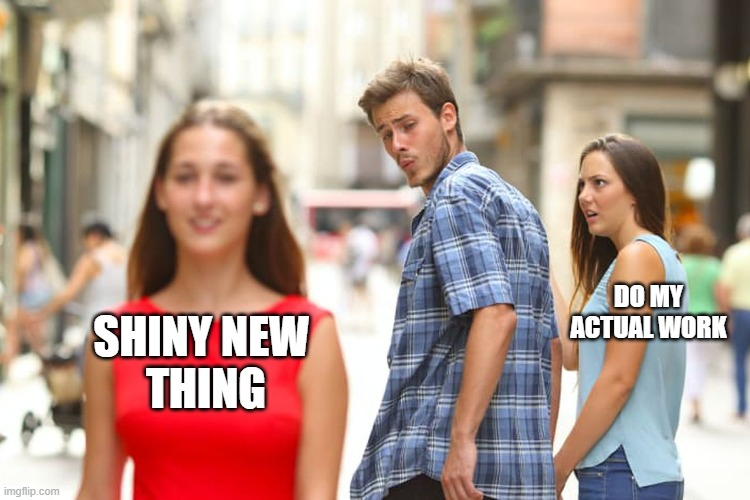By Cris R.
|
4 Days ago
|
3 Min read
In the vast landscape of trying to be “productive” at home, work, and school, we’ve all encountered that moment when a task transforms from a straightforward endeavor into an insurmountable mountain. The feeling of being stuck, like wading through thick molasses, can be demoralizing and emotionally draining. Here, we delve into the intricacies of our vast experience of feeling stuck and how to liberate ourselves from the chains of stagnation.
Tasks, whether complex projects or mundane chores, can trigger the sensation of being stuck for various reasons. One common culprit is the absence of a clear starting point or roadmap; that lack of direction can transform even the simplest of things into an overwhelming maze, leaving us with indecision. Another factor contributing to the sensation of being stuck is the fear of failure or perfectionism. The desire for flawless execution can create a mental blockade, making it difficult to take the initial steps. The fear of falling short of our expectations can paralyze us, trapping us in a cycle of inaction. Procrastination is a notorious companion to stagnation; delaying the commencement of a task creates a psychological burden that grows with each passing moment, further fueling the feeling of being stuck. The longer the delay, the more formidable it seems, intensifying our sense of stagnation.
Emotionally, feeling stuck in a task often invokes a sense of frustration and inadequacy. The inability to make progress can lead to a negative self-perception, eroding our confidence and creating a cycle of self-doubt. This emotional burden can seep into other aspects of our lives, affecting our overall well-being. Frustration can be accompanied by guilt, significantly when we recognize the importance of the task at hand. The awareness that we are not living up to our own expectations or meeting external deadlines can contribute to a profound sense of disappointment. As stagnation persists, feelings of helplessness may take root. The belief that it is insurmountable or that we lack the necessary skills to complete it can create a mental barrier, further trapping us in a state of inaction.
The physical toll of feeling stuck is not to be underestimated. The body often mirrors the emotional and mental distress associated with stagnation. Procrastination-induced stress can lead to muscle tension, particularly in the shoulders and neck, contributing to discomfort and fatigue. Stagnation can also affect sleep patterns. The preoccupation with unresolved tasks can infiltrate our thoughts, leading to restless nights and disrupted sleep. The resulting fatigue exacerbates the sense of being stuck, creating a challenging cycle to break. The body’s response to stagnation isn’t limited to tension and disrupted sleep; it can also manifest in headaches, digestive issues, and a general sense of malaise. The interconnectedness of the mind and body underscores the importance of addressing both aspects when breaking free from the shackles of stagnation.
Liberate yourself in 5 easy stages:
- When faced with a daunting task, break it down into smaller, more manageable components. Focus on one aspect at a time, making the overall objective less overwhelming.
- Establish achievable and realistic goals for each work session. Setting manageable targets creates a sense of accomplishment, gradually dismantling the feeling of being stuck.
- Shift your mindset from viewing the task as an insurmountable obstacle to seeing it as a series of challenges to overcome. This change in perspective makes the task less daunting.
- Often, the paralysis of being stuck stems from indecision about where to start. In such cases, start anywhere. The act of initiating the task, regardless of the starting point, can kickstart momentum.
- Release the grip of perfectionism. Understand that only some aspects of the task need to be flawless. Accepting imperfection allows for progress and minimizes the emotional weight of the task.
Feeling stuck is a universal experience but doesn’t have to be a permanent state. By understanding the roots of stagnation, acknowledging its emotional and physical toll, and employing strategic techniques to break free, we can liberate ourselves from the shackles of inaction. Tasks that once seemed impossible can become stepping stones to success, and the journey from stagnation to productivity is marked by resilience, adaptability, and the unwavering determination to conquer the challenges in our path. As we navigate the depths of feeling stuck, we emerge with newfound strategies and a profound understanding of our capacity for growth and achievement.
If you like what we do? Buy us a coffee using the link below:
☕ Buy us a coffeeShare This:


